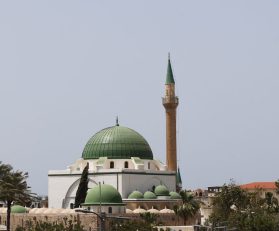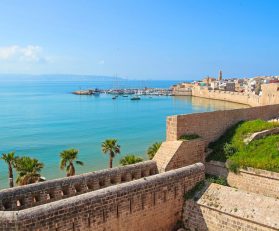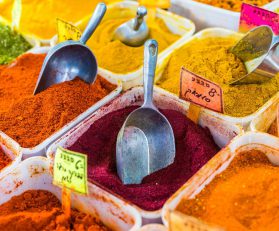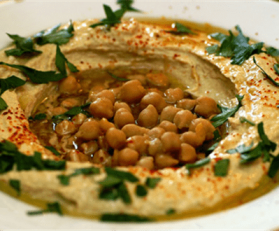“Hamam al-Basha” was built at the end of the 18th century by Governor of Akko, Jazzar Pasha. At first, it was called “Hamam al-Jadid” (the new Hamam), but its name was subsequently changed to Hamam al-Basha (the Pasha’s Hamam), in honour of el-Jazzar.
The Turkish bath’s construction was part of the transformation of Akko during the Ottoman Period from a small fishing village (primarily at the hands of al-Jazzar Pasha) into a teeming port city and a major construction and trade center. During his reign, el-Jazzar strove to further the city in many and varied ways. Among his accomplishments is the aqueduct which led the well water to the city, the breakwater for safe docking at the port and major buildings such as the Khan el-Umdan, Akko’s largest mosque, his luxurious palace and of course, the Turkish bath.
The Summer Dressing Room
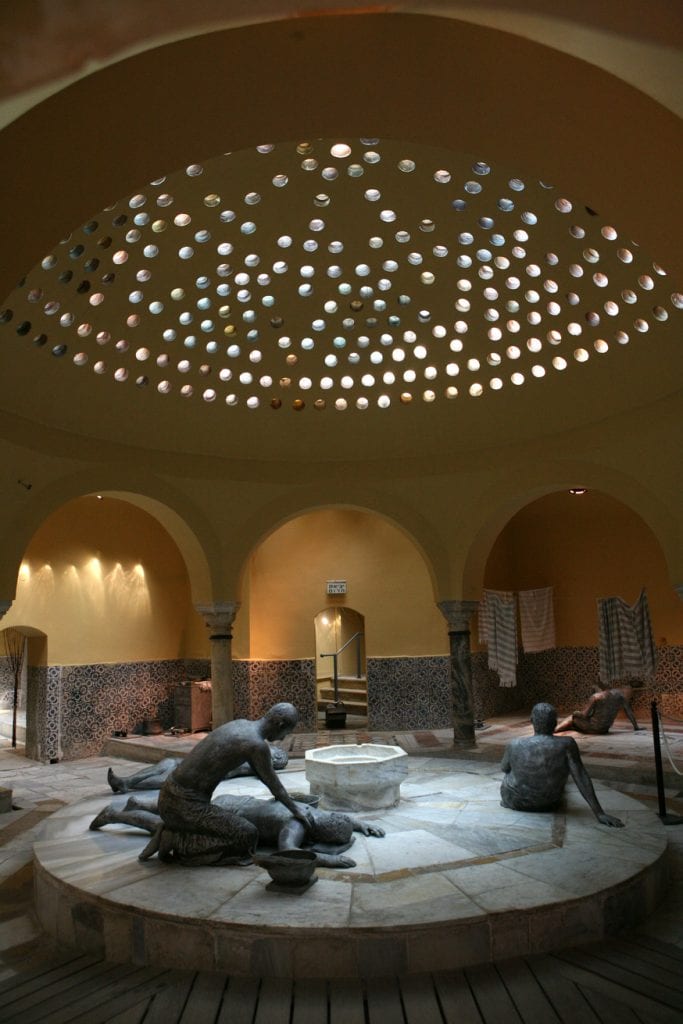
This is the first room you will enter from the courtyard. This is where the Hamam visitors got undressed, left their clothes, wrapped themselves in special towels, put on their Hamam sandals and went for their various treatments. After the bath and treatments, this is where they returned to rest and unwind.
The Four Intermediary Rooms
Are located between the cold room and the hot room – the lukewarm rooms – served as various treatment and activity rooms (from cosmetic treatments, healing and massage treatments, dating parties and childbirth preparation sessions).
The Hot Room
The hot room is the heart of the Hamam – the steam room, which housed a heated pool and a steam bath. Treatment consisted of scrubbing, soaping, and massaging of the body and soul. The small rooms surrounding the central stage were used for individual treatments for the wealthy and the privileged.
The Story of the Last Bath Attendant
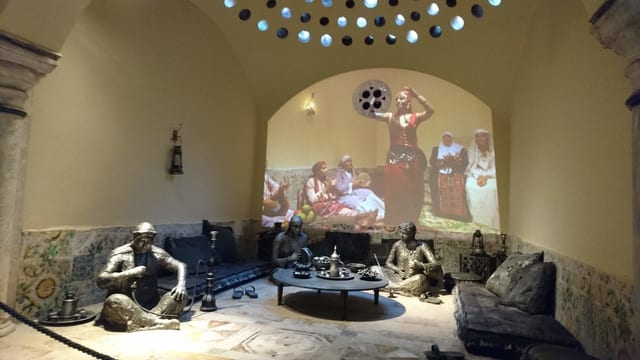
The Story of the Last Bath Attendant presents a novel approach to depicting a chapter in the history of Akko – the Ottoman Period. In lieu of an ethnography or history museum, we chose to present chapters of the period by breathing life into the Haman and involving the visitor in the stories from between its walls.
For about one hundred and fifty years – from its inception to the War of Independence in 1948, the Hamam served as an active bathhouse. In addition to its religious function of fulfilling the commandment of purification preceding prayer, the Hamam met a substantial number of needs in all walks of life in the Ottoman city. It served as a site for social encounters, rest, entertainment and celebrations. It is where doctors and barbers met and it also served as a house of luxury for the city’s well-to-do. In other words, this where the action was and where the latest events were discussed – important historical events as well as latest gossip.
Operating Hours: 9:00am – 19:30pm
Address: Portsei ha-Mivtsar St, Akko
Curious? Have a look at IsraelRail’s Acre Tours!


